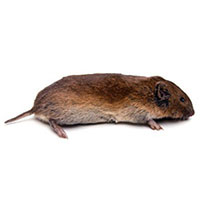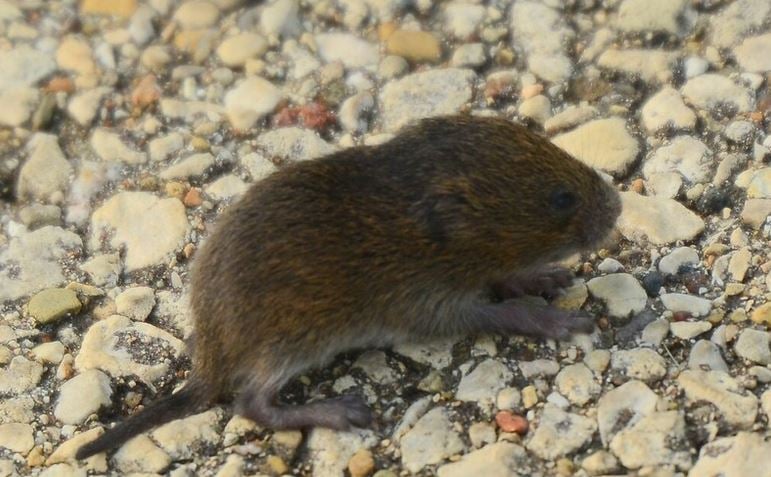Vole Troubles? Reliable Control Actions for Peace of Mind
Vole Troubles? Reliable Control Actions for Peace of Mind
Blog Article
Mastering Vole Parasite Control: Thorough Insights on Invasion Avoidance and Therapy Strategies
As homeowner and caretakers, the visibility of voles can present a considerable challenge to keeping the honesty of our outside spaces. Recognizing the complexities of vole actions is vital in developing reliable parasite control strategies. By recognizing the refined signs of vole problem early on, we can take aggressive steps to avoid prevalent damage. In this discussion, we will certainly discover the subtleties of vole actions, explore the identification of invasion indications, and uncover one of the most reliable prevention and therapy approaches. Stay tuned to discover the understandings that will certainly empower you to grasp vole pest control and protect your residential or commercial property against these evasive rats.
Understanding Vole Habits
Taking a look at the foraging patterns of voles offers important insights right into their actions and environment preferences. By observing their foraging behavior, researchers can acquire a much better understanding of where voles choose to establish their environments and the degree of their environmental effect.
Research study indicates that voles show discerning feeding routines, choosing bulbs, seeds, and roots - vole yard damage. This dietary choice influences their foraging patterns, leading them to locations abundant in plant life and ground cover. Furthermore, voles are known to develop sophisticated tunnel systems for foraging and nesting objectives, showing a high degree of adaptability to their surroundings
Recognizing vole behavior is important for applying targeted insect control measures that interrupt their habitat choices and foraging activities. By examining their behavior, specialists can establish more reliable prevention and therapy strategies to handle vole problems.
Identifying Indications of Vole Invasion
Vole problems can be discovered by recognizing specific indications of their existence in a location. One of the most usual signs of a vole invasion is the visibility of surface area runways. Voles produce networks of slim pathways on the ground that are normally about two inches broad. These paths are often discovered in verdant locations or beneath compost or ground cover where voles can relocate freely and look for food.
One more vital indicator of vole infestation is the presence of small burrow openings in the ground. In addition, voles are known to leave behind chewed plant stems, roots, and light bulbs near their burrow openings, showing their feeding task in the location.
Furthermore, vole droppings can likewise indicate their visibility (vole yard damage). Vole droppings are little, brown, and cylindrical in shape, appearing like grains of rice. Finding these droppings along paths or near burrow openings can verify a vole infestation. By being watchful for these signs, home proprietors can quickly address vole infestations and protect against more damage.
Implementing Aggressive Avoidance Procedures
To properly reduce the dangers linked with vole infestations, residential or commercial property proprietors can proactively implement a range of precautionary procedures aimed at safeguarding their landscapes and yards. Furthermore, keeping yard areas visit this site right here clean and lessening clutter where voles might conceal or nest is essential in decreasing their existence.
In addition, utilizing natural vole deterrents like castor oil-based repellents or predator urine can act as reliable safety nets. It is additionally recommended to consistently inspect outside rooms for any signs of vole activity, such as runways or burrow openings, to address potential problems without delay. By taking on these aggressive avoidance approaches, homeowner can substantially minimize the probability of vole damages and preserve click to read the health and aesthetics of their landscapes.
Reliable Therapy Approaches
Incorporating targeted capturing methods and making use of accepted rodenticides are necessary elements of effective treatment strategies for taking care of vole problems. Trapping can be an efficient means to minimize vole populaces, particularly when placed strategically in their energetic runways. Snap catches and live catches can both be efficient, with the last enabling for the capture and relocation of voles. When making use of rodenticides, it is critical to comply with safety guidelines to stop damage to non-target animals and pet dogs. Location rodenticides in secure lure stations to minimize threats to unintentional targets. Additionally, environment modification, such as lowering ground cover and removing resources of food, can help prevent voles from infesting an area. Routine monitoring and upkeep are also key facets of successful therapy strategies to make sure that vole populations are kept under control. By combining capturing, rodenticides, environment alteration, and constant monitoring, efficient vole pest control can be attained.

Tracking and Upkeep Tips
Routine monitoring permits for the very early detection of vole activity, making it possible for timely intervention prior to infestations worsen. To effectively keep track of vole populaces, purposefully put catches can be made use of in vole runways or near burrow entrances.
In addition, maintaining a clean and well-kept landscape is essential in vole prevention. Cleaning away debris, such as heaps of wood or thick greenery, removes prospective vole habitats. On a regular basis cutting and mowing grass greenery helps minimize vole hiding areas and minimizes their accessibility to food resources.

Verdict
To conclude, understanding vole parasite control calls for a strong understanding of vole behavior, the ability to identify signs of infestation, applying aggressive avoidance procedures, efficient therapy methods, and constant tracking and maintenance. By taking an extensive strategy to vole control, people can efficiently manage and protect against problems, ultimately shielding their residential or commercial property and surrounding setting from damages caused by these small rodents.
In this discussion, we will certainly discover the nuances of vole actions, dig into the recognition of invasion indicators, and uncover the most efficient avoidance and treatment approaches.Integrating targeted trapping approaches and utilizing accepted rodenticides are necessary elements of effective therapy techniques for taking care of vole invasions. To effectively check vole populations, purposefully placed catches can be utilized in vole paths or near burrow entrances. Checking and repairing any type of problems to these structures guarantees that vole control continues to be efficient in guarding buildings from infestations. By including these monitoring and maintenance techniques into a thorough vole insect control strategy, people can efficiently take care of vole populaces and safeguard their buildings from damage.
Report this page